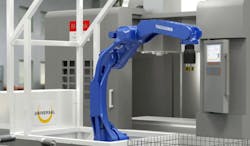While most discussions about the application of artificial intelligence (AI) in manufacturing focus on technology in development, AI is not entirely a technology of the future for industry. Real world applications exist and products are available today for industrial use. A key example of AI being put to use in core applications can be found in the evolution of bin picking to order fulfillment picking.
In a recent blog post, Sarah Mellish of Yaskawa noted that “traditional bin picking methods have given way to order fulfillment picking approaches, moving the complexity of the process from the hardware to the software. This is important because of the physical modifications required to meet supply chain variability today.”
To address this evolution in technology to meet industry demands, Mellish noted that, for nearly a decade now, Universal Logic has been integrating artificial intelligence, sensing and robotics into automated systems. In particular, she noted Universal Logic’s Neocortex AI software platform, which enables robotic cells to handle the item diversity, container variation and process changes required for piece-picking order fulfillment without additional engineering or programming.
In 2016, Yaskawa Motoman collaborated with Universal Logic to design and introduce the Neocortex Goods to Robot (G2R) Cell—a pre-engineered adaptive picking solution that uses intelligent 3D vision and interactive motion control to identify and handle unsorted items “with a level of speed and accuracy that exceeds human ability,” Mellish said. “This workcell is the first plug-and-play robotic solution targeting high-mix/high-volume applications scaled to a human form factor.”
The workcell can perform 900 picks per hour at peak speeds of up to 27 picks per minute when needed, and is touted as being highly flexible not just for its ability to handle a variety of pick-and-place applications, but for its obstacle avoidance as well.
The video below shows the Neocortex Goods to Robot Cell in action.
Leaders relevant to this article:


